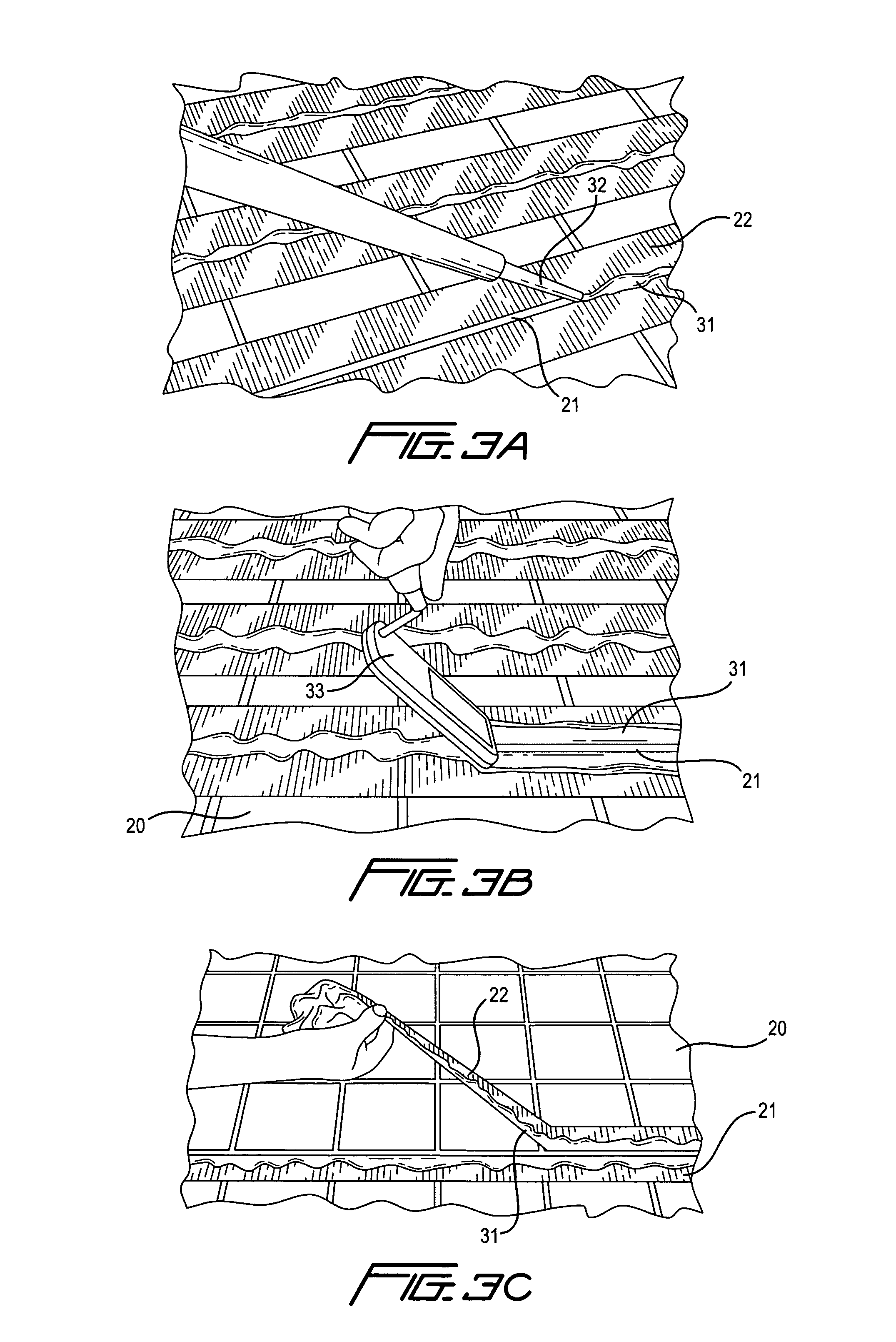Method of grouting commercial kitchen floors using a two-part reactive epoxy grout
a technology of reactive epoxy and commercial kitchen, which is applied in the field of floor grouting, can solve the problems of ultimate failure of traditional grout products, and achieve the effects of low odor, rapid cure time and rapid cur
- Summary
- Abstract
- Description
- Claims
- Application Information
AI Technical Summary
Benefits of technology
Problems solved by technology
Method used
Image
Examples
Embodiment Construction
[0026]Referring now to the drawings, FIG. 1 of the drawings depicts tile 20 with deteriorated grout 30 on a floor which is the object of this regrouting process disclosed herein. FIG. 2 discloses the process of this invention which involves steps 1-16.
[0027]FIG. 3 depicts step 13 with the dispensing gun 35 applying epoxy grout 31 through a static mixing applicator nozzle p 32 into the joint 21 between the strips of masking tape 22.
[0028]FIG. 3B depicts step 14 wherein the epoxy grout 31 is smoothed into the joint 21 between tiles 20 with a leveling tool 33.
[0029]FIG. 3C depicts step 14 which is the removal of tape 22 from both sides of the joint 21.
[0030]The reactive epoxy based floor grout 31 used in this unique process was especially formulated to be packaged in cartridges 34 and is labeled as Marcoat® floor grout epoxy. This product was developed to have the highest solvent resistance possible to withstand harsh environments, where heavy foot traffic, aggressive cleaning agents i...
PUM
| Property | Measurement | Unit |
|---|---|---|
| specific gravities | aaaaa | aaaaa |
| specific gravities | aaaaa | aaaaa |
| temperature | aaaaa | aaaaa |
Abstract
Description
Claims
Application Information
 Login to View More
Login to View More - R&D
- Intellectual Property
- Life Sciences
- Materials
- Tech Scout
- Unparalleled Data Quality
- Higher Quality Content
- 60% Fewer Hallucinations
Browse by: Latest US Patents, China's latest patents, Technical Efficacy Thesaurus, Application Domain, Technology Topic, Popular Technical Reports.
© 2025 PatSnap. All rights reserved.Legal|Privacy policy|Modern Slavery Act Transparency Statement|Sitemap|About US| Contact US: help@patsnap.com



